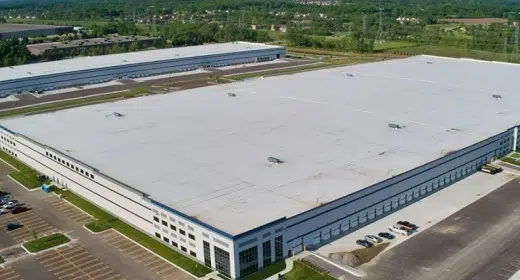Our Next Energy (ONE), a Michigan-based energy storage technology company, said it is planning a $1.6 billion investment in a new battery cell manufacturing plant in its home state…
The facility is expected to have an annual capacity of 20 GWh by the end of 2027, equivalent to 200,000 electric vehicle battery packs annually. State incentives worth $236 million are pending approval by state lawmakers.
The company’s battery technology is aimed at increasing the range of electric vehicles to more than 600 miles on a single charge.
The company said it plans to onshore its supply chain and integrate materials refinement with its Massachusetts-based partner 6K Energy into its manufacturing processes. 6K Energy has an ongoing relationship with Albemarle, a global supplier of lithium
ONE also said it plans to use renewable energy for 50% of its power needs, and that it partnering with a North American battery recycler to bring recycled materials back into its cells.
ONE also is working with DTE Energy to operate a grid-tied factory with utility-scale energy storage. Its manufacturing plant is intended to act as a battery as part of a so-called gigafactory-to-grid model.
ONE said it will take possession of the facility in January and begin upgrades and equipment installation.
Subscribe today to the all-new Factor This! podcast from Renewable Energy World. This podcast is designed specifically for the solar industry and is available wherever you get your podcasts.
Listen to the latest episode, which was recorded live from the floor of RE+ in Anaheim. This episode features Lightsourcebp Americans CEO Kevin Smith, Qcells North America head of market strategy and public affairs Scott Moskowitz, and Cypress Creek Renewables VP of Engineering Luke O’Dea.
In September, ONE unveiled a 240-Ah prismatic anode-free cell. The technology was expected to enable the commercialization of its Gemini dual-chemistry architecture, which is expected to be integrated into a BMW iX prototype vehicle later this year.
The company’s first-generation 1007 Wh/L cell is designed to eliminate the need for graphite and anode manufacturing equipment, enabling what it said would be $50/kWh cell cost at scale.
Anode-free cells typically have low cycle life compared to conventional cells, which has not made them viable in an automotive setting.
ONE said its Gemini dual-chemistry architecture uses more standardized LFP and anode-free chemistries in one battery pack. This allows each specialty chemistry to focus on different functions: LFP for daily driving, and anode-free to extend range for long distances. The combined system is expected to deliver more than 250,000 miles of lifetime service.
“Scaling 100x from a 2 Ah pouch cell to a 240 Ah prismatic in less than 12 months is a testament to the simplicity of the design and ability to use conventional Li-ion production equipment,” said Steven Kaye, ONE chief technical officer in a statement.
Plans call for Gemini to reach volume production in 2026.









































